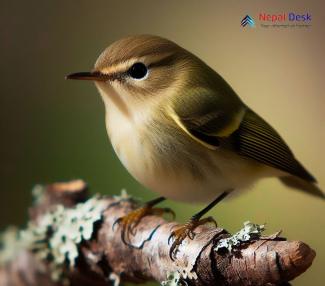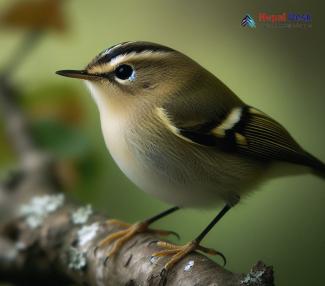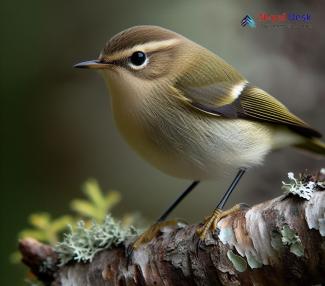Nepal is home to a breathtaking variety of bird species, making it a birdwatcher's paradise. One such species that captures the hearts of enthusiasts and casual observers alike is the Eastern Crowned Warbler (Phylloscopus coronatus). It is a species of Old World warbler in the family Phylloscopidae. The genus name Phylloscopus is from Ancient Greek phullon, which means "leaf", and skopos, which means "seeker". The specific coronatus is from Latin and means "crowned". These beautiful birds can be found amidst the dense foliage of Nepal's forests, bringing joy to those who have the opportunity to spot them.
In this article, we'll take a closer look at the Eastern Crowned Warbler and explore some interesting facts about this fascinating bird.
A Brief Overview of the Eastern Crowned Warbler
The Eastern Crowned Warbler is a small, passerine bird that predominantly breeds in East Asia. It belongs to the family Phylloscopidae, which consists of leaf warblers and allies. This delightful bird is characterized by its subtle yet striking greenish-yellow plumage with bold stripes on its crown. The combination of colors effectively camouflages them in their natural habitat – dense forest undergrowth.
Habitat and Distribution in Nepal
The Eastern Crowned Warbler can be found throughout the central and eastern parts of Nepal, particularly in regions with dense forests, mixed deciduous woodlands, and tall shrubs. Elevations between 500 and 2,500 meters are most suited for these birds as they prefer cool temperatures and thick vegetation cover.
Migratory Patterns
The Eastern Crowned Warbler is a migratory bird that breeds during spring and summer in East Asia before heading south to spend the winter months across Southeast Asia, including Thailand, Vietnam, Cambodia, Laos, India, and Nepal. During their migratory journey, they cross vast distances covering thousands of kilometers with great precision.
Diet and Feeding Habits
The diet of the Eastern Crowned Warbler primarily consists of insects and caterpillars. These birds are incredibly agile and skillful hunters, thanks to their slender build. They forage through the foliage, flitting from one branch to another in search of prey and often engaging in aerial pursuits to catch flying insects.
Conservation Status
The Eastern Crowned Warbler is fortunately categorized as a species of 'least concern' by the International Union for Conservation of Nature (IUCN). While their global population is considered stable, continuous monitoring and conservation efforts are crucial in ensuring these birds continue to flourish amidst an ever-changing environment.
Capturing the Beauty: Tips for Birdwatching in Nepal
Spotting an Eastern Crowned Warbler during your visit to Nepal can be an exhilarating experience. To increase your chances of a sighting, consider these helpful tips:
- Visit during the migratory season: Plan your birdwatching activities around the migratory patterns to boost your chances of spotting the Eastern Crowned Warbler.
- Bring proper equipment: High-quality binoculars will help you observe these beautiful birds from a comfortable distance without disturbing them.
- Hire a knowledgeable guide: Local experts familiar with the region's bird life can lead you to prime birdwatching spots where you're more likely to come across the Eastern Crowned Warbler.
- Dress appropriately: Wear comfortable clothing and suitable footwear, as birdwatching may involve trekking through various terrains.
- Practice patience: It may take some time before you spot your target species, but perseverance will ultimately reward you with a memorable encounter.
In conclusion, the Eastern Crowned Warbler is a fascinating and beautiful bird species worth knowing about and seeking out during your birdwatching adventures in Nepal. With its distinctive appearance and enchanting song, this truly captivating creature is sure to leave a lasting impression on anyone fortunate enough to observe it in its natural habitat.




